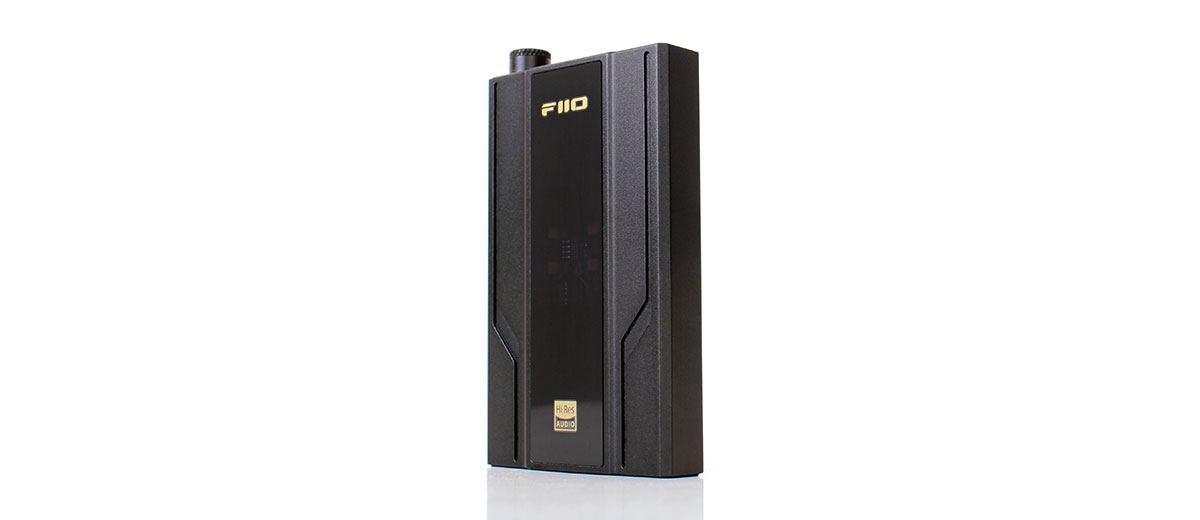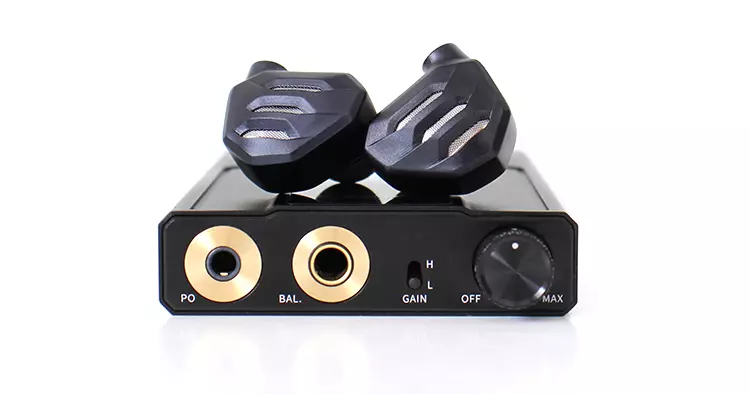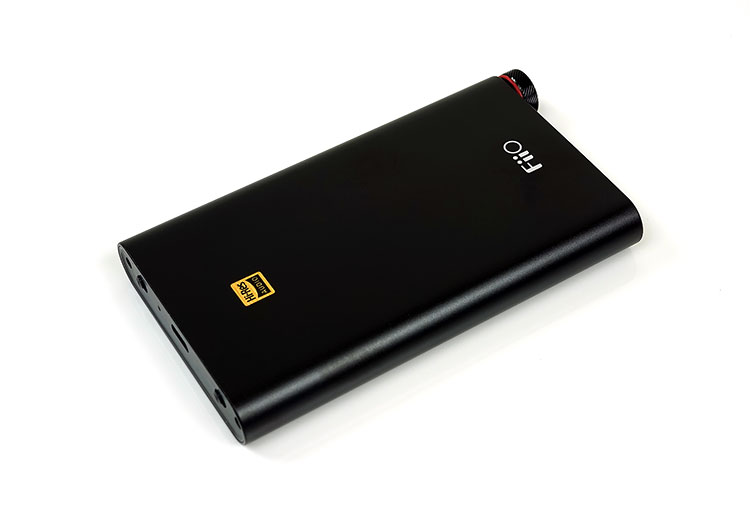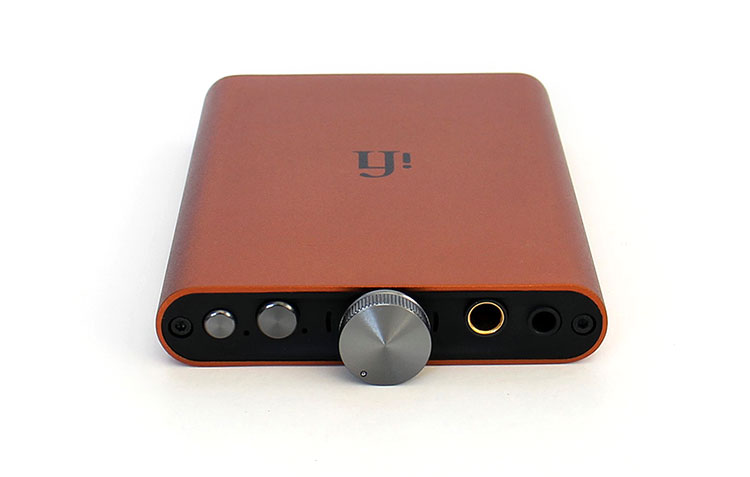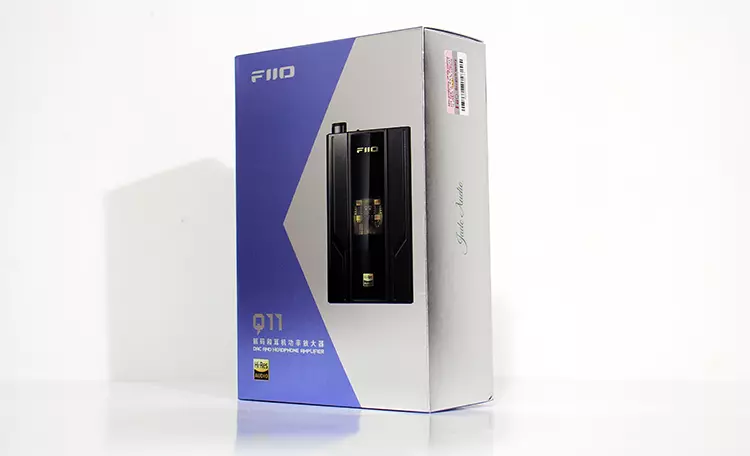Sound Impressions
Summary
The FiiO Q11 overall sound signature seems to be flat-lined through its entire frequency range.
It’s very neutral and natural sounding but it has a nice punchy character to it since it does seem to have an ample amount of driving power behind that natural character.
All the audible frequencies seem to be produced smoothly and there seems to be an absence of peaks or areas that are emphasized or accentuated. The result is a clean presentation and a non-fatiguing character.
The implemented power section combined with the battery-powered components produces a very dark, hiss-free background that lets the music come through except for some of the most subtle details heard on, for example, higher tier setups like FiiO’s own M11 Pro which uses THX amplification.
Staging and Dynamics
Dynamics come through in an energetic and punchy manner. It’s not a scary dynamic because it adheres to a natural response that presents what’s on a recording and avoids excessive excitement.
If you use the balanced output, you’re treated to a more robust output but the tonality, dynamics and the rest stay the same which is a good thing. I
It seems FiiO found a good balance between these two outputs, so you don’t have to use one or the other exclusively to get the best results.
As far as staging is concerned, the Q11 has a presentation that’s not too wide and gives you what’s generally within the overall recording. If you compare it to a high-end component, however, you might find the staging to be narrow.
I do prefer a smaller and more personal stage at times and with certain recordings. For example, If I’m listening to Jazz, I prefer a more personal space.
Classical or even some dance and EDM? A larger stage. The Q11 can do the small space and meets you in between as far as stage size when it has to.
Synergy
Power
There is a small oddity with the FiiO Q11 which to me is that it presents a characteristic similar to a class A amplifier and mostly so with full-sized headphones.
When you raise the volume, it rises slowly and only when you considerably pass the halfway mark does it start to get considerably loud.
Perhaps FiiO did this purposefully since that minimizes the chances of the user blasting their eardrums with a momentary excess volume blast.
It seems like FiiO took a safe route in this aspect. The implementation works well since it avoids touching saturation levels plus it seems to be a small remedy to the volume wars issue.
Pairing
The FiiO Q11 makes a perfect companion to the modern-day smartphone since most makers are omitting the 3.5mm output port plus they never offered audiophiles acceptable levels of sound quality. The Q11 fixes that issue and does so on its merits since it doesn’t use your mobile device’s battery.
Pairing the Q11 with some IEM is just a matter of finding a sound signature you like and you’re done. The available amount of power is sufficient for any IEM, including multi-driver ones like the FiiO FH9, or for a single dynamic just the same, like the FD7 or FD5.
Select Comparisons
FiiO Q1 Mark II
Price $99.00
Technical
The FiiO Q1 Mark II is the outgoing XMOS-equipped model that gave birth to the new Q11. It was a popular model and FiiO sold many units because it offered a high level of bang for the buck.
One thing I do like about the FiiO Q1 Mark II is the extra amount of features that were omitted on the Q11.
For example, the Q1 Mark II had a bass boost feature that although not my favorite implementation of this particular feature, it’s still nice to have just in case you run into a bass light model IEM.
The other feature that went missing was the analog input so you were able to use the Q11 as a stand-alone amplifier. But nowadays with the removal of the 3.5mm jack off many mobile devices, this feature is becoming less popular and useless as time goes by.
Design
The Q1 Mark II and the new Q11 look different in many ways and all they share is the half-way knurled volume knob, the USB-C input, and the dual headphone connectivity.
However, this time around the Q11 ditched the 2.5mm balanced connection for a 4.4mm Pentaconn which has become more popular nowadays. I consider this particular change to be a smart move.
The overall design aesthetics differ in that the Q1 Mark II has rounded sides and a matte black finish versus the Q11 which has a classic black brushed metal finish and gold color scheme.
The Q11 is also larger by a few millimeters here and there. But I do prefer the canteen flask style of the Q1 Mark II and the curved sides over the sharp industrial-looking design with sharper and more defined lines and cornered edges.
Performance
The FiiO Q1 Mark II seems to have a neutral but warm sound signature that is smooth and has an even more so non-offensive character, but it can come through as too soft-mannered.
It can come across at times as too clean or too lean. The Q11 takes a different approach and raises the dynamics aspect while simultaneously keeping that noise floor inaudible.
Of course, I would give the win in sound quality to the Q11. It’s just more vibrant, detailed, powerful, and just more musical overall.
Certainly, FiiO outdid themselves here and the new model steps it up a notch and to another level of performance.
iFi Audio hip-dac2
Price $189.00
Technical
The iFi Audio hip-dac2 is one of the most talked about and popular portable DAC amplifiers out there. It has lots of good technology inside and under that funky-looking orange-colored shell.
The first component of interest would certainly be the XMOS 16-core processor. Behind that, there’s a set of Burr brown DACs customized by iFi and their color-inducing filters.
You do have to select and stick to one when you flash the firmware so choose wisely. I like the GTO personally.
Another standout feature is the XBass which is my favorite bass boost feature. There’s another feature upfront and next to the XBass button which is iFi Audio’s Power Match feature that gives you the equivalent of a gain switch.
There’s lots of good stuff inside the iFi Audio hip-dac2. Custom iFi Audio OV OP amps, TDK COG caps, and a low-noise Texas Instruments power supply IC are some of the components mentioned along with a Femto clock to keep things tidy.
Design
The hip-dac2 resembles a hip flask and has a peculiar orange hue that’s unique. The overall style resembles the Q1 Mark II if you take into consideration the rounded sides and a center-mounted volume knob.
Both cases are made of aluminum and in size, both these models are not too far apart from each other. The hip-dac2 does have a busier front and back panel.
The hip-dac2 has separate connections for the raw digital data and a separate connector for charging the internal battery which to me, lacks a bit of longevity far as the amount of playback time you get from a full charge.
The data connector is a recessed USB male connector that some do complain about the plug because it’s not a common plug. But it’s certainly a robust one and it’s the particular reason why iFI uses them.
Performance
It seems the hip-dac2 just wants to be heard and seems louder in volume with the same level of input and volume. Internal gain levels seem higher on the hip-dac2.
This does raise the hiss levels on high gain particularly. The Q11 has a gentler nature in sound signature but the hip-dac2 has a more vivid and present top-end presentation.
The hip-dac2 seems more forward and projects a larger soundstage by a small margin. It seems to project a larger and more open sound but things could get harsh if pushed too hard and in that light, the Q11 avoids that by having a less sensitive volume knob gain.
The one aspect that keeps me going back to the hip-dac2 is the flexibility you get when it comes to sound coloration. You could change the overall tonality by simply switching over to another firmware or just hitting that XBass button.
Another aspect to look at is that the hip-dac2 has the more capable digital formats and the hip-dac2 is the more capable in that respect, including MQA unfolding.
However, if you stick to PCM and are traditional like me, the Q11 will do a good job with those PCM formats and save you some cash at it.
Our Verdict
When FiiO and Jade Audio get together they usually give the end user a lot for their hard-earned cash. It seems that trend is continued with the Q11 portable DAC amplifier.
FiiO has focused on improving the sound quality this time around since there seems to be a removal of features at the same time.
So, you lose a bass boost feature plus a line input which is a type of connectivity that’s losing popularity nowadays but, in its place, you get an upgraded and refined tuning.
The FiiO Q11 performance gain is mostly due to the increase in power output and low-noise floor over its sibling which to me is trending on a positive note with an emphasis on quality output over everything else.
However, for me, this is of utmost importance and the bottom line objectively for most audiophiles.
FiiO Q11 Technical Specifications
- DAC: CS43198
- Max supported sampling rates: 384kHz/32bit, DSD256
- USB connector: Type-C USB2.0
- Dimensions: About 60.5×105.7x16mm
- Weight: About 150g
- Battery: 2600mAh lithium battery
- Battery life: >13 hours
- Output power 1: 165mW (32Ω/single-ended)
- Output power 2: 650mW (32Ω/balanced)
- SNR 1: ≥122dB (32Ω/A-weighted/single-ended)
- SNR 2: ≥125dB (32Ω/A-weighted/balanced)
- Noise floor: PO<1.8μV (A-weighted); BAL<2.4μV (A-weighted)
- Output impedance 1: <1.2Ω (32Ω load/single-ended)
- Output impedance 2: <2.0Ω (32Ω load/balanced)
- THD+N: <0.0006% (1kHz/32Ω/single-ended)
- THD+N: <0.0006% (1kHz/32Ω/balanced)

